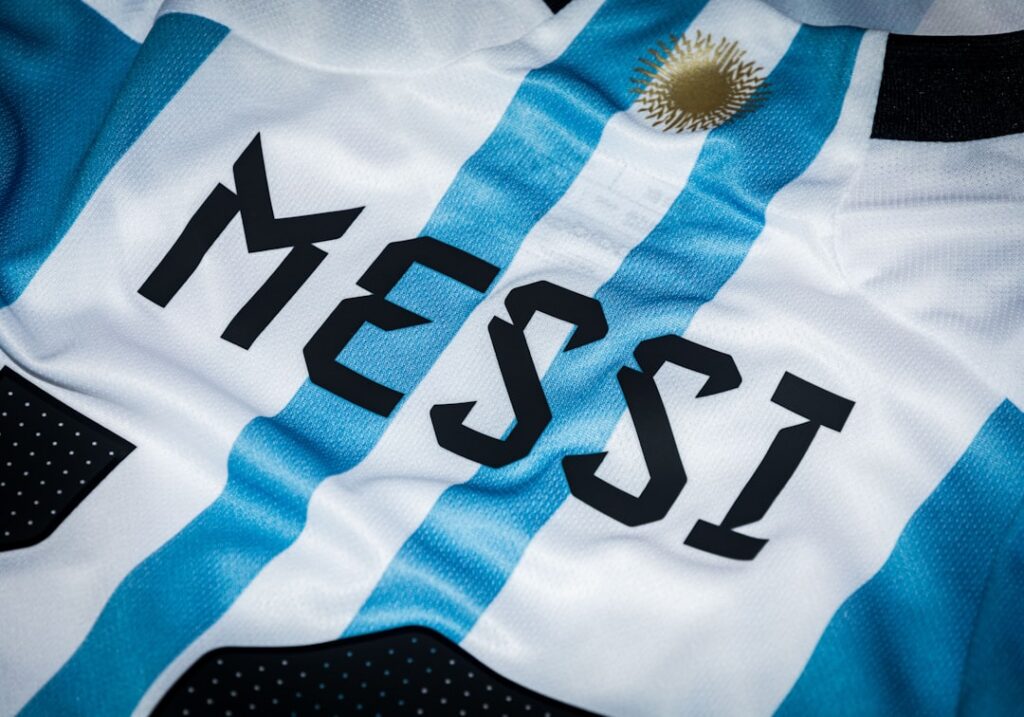
Every four years, the world’s greatest footballing nations gather for the ultimate showdown in the FIFA World Cup. It’s not just about the goals and the glory; it’s about the unforgettable traditions that make the tournament a celebration of culture and unity. Let’s dive into some of the most cherished World Cup traditions—jerseys, chants, and rituals—that bring an extra layer of magic to the beautiful game.
The Heritage of Jerseys
Jerseys are more than just uniforms; they are emblems of national pride and identity. Each World Cup, teams unveil new kits that often pay homage to their nation’s history or embody modern styles. For instance, Brazil’s iconic yellow and green jersey, known as ‘Canarinho’, symbolizes not just the team but the heart and soul of Brazilian football. This vibrant design has remained largely unchanged since their 1958 World Cup triumph, and the jersey itself has witnessed five world titles.
In recent tournaments, we’ve seen innovative designs like Nigeria’s 2018 kit, which took the world by storm with its bold neon green chevrons. Such designs not only capture attention but also become instant fan favorites, earning respect on the global stage. Come 2026, we can anticipate equally stunning jerseys that reflect tradition and modernity, marking their nation’s presence with flair and style.
The Power of Chants
No other sporting event brings fans together quite like the World Cup, and nowhere is this spirit more alive than in the stadiums filled with the roar of chants. These catchy, passionate songs resonate through the stands, uniting fans in their love for the game and unwavering support for their teams.
Consider Argentina’s famous chant, ‘Vamos, Vamos, Argentina!’ It’s as much a part of the team’s identity as Lionel Messi himself. Each chant hypes the crowd, inspiring players on the field. This passionate chorus can often be the 12th man for many teams, sometimes swinging a match in their favor. Imagine being at the 2026 World Cup, where new chants birthed by the transcontinental host nations—U.S., Canada, and Mexico—will echo for years to come.
Rituals That Inspire
From pre-match rituals to superstitious traditions, these practices offer a glimpse into the psyche of both teams and fans. Whether it’s England’s faithful rubbing their lucky rabbits’ feet or Spain’s ceremonial passing of the figurative La Rojita torch to inspire unity, these rituals all serve to boost morale and focus.
A standout ritual is New Zealand’s ‘Haka’, a Maori war dance performed with impressive synchrony and intensity. Though more common in rugby, it made headlines when the country’s football team adopted it for a significant international fixture. With eyes set on 2026, it’s thrilling to ponder what unique expressions of national fervor will emerge.
What Does This Mean for 2026?
The World Cup’s traditions of jerseys, chants, and rituals are not mere spectacles; they encapsulate the culture, passion, and historical tapestry of the sport. As the 2026 World Cup approaches, fans worldwide eagerly anticipate the traditions that will unfold, adding new layers to the ever-growing archive of football folklore.
This mix of old customs and innovative expressions could be a huge boost for teams, potentially tipping the scales in their favor. For Team USA, hosting these games marks a significant moment of prestige and opportunity, pushing them to leave a lasting impact in front of a home audience.
Join the Tradition
What’s your favorite World Cup tradition? Which chants or jerseys do you think will brand this upcoming tournament? We’d love to hear from you! To stay updated with all things World Cup 2026, make sure to follow us at CupVibes.com.


